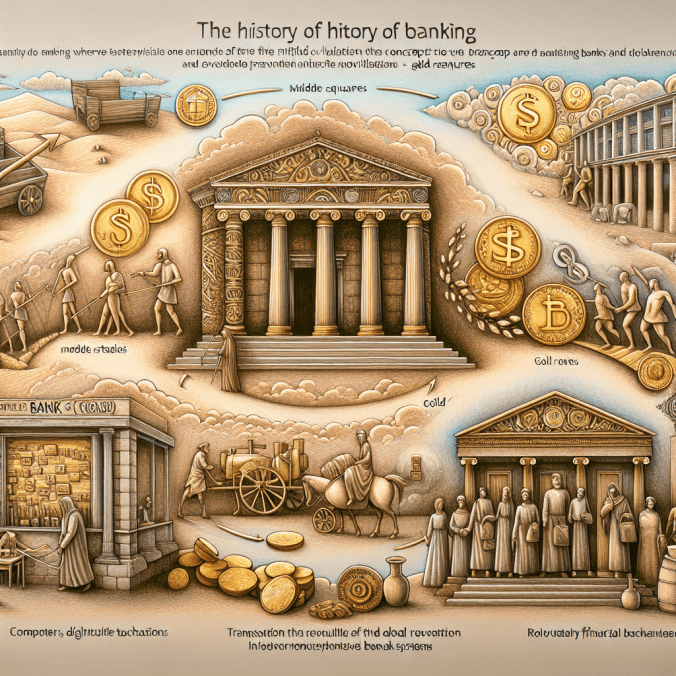The History of Banking: From Ancient Times to Modern Financial Institutions
Welcome to our fascinating journey back in time, where we explore the evolution and development of banking from ancient civilizations to the modern financial institutions that we know today. Join us as we delve into the captivating story of how banking has shaped the course of human history.
Ancient Beginnings: The Barter System
Long before the concept of modern banking emerged, ancient civilizations relied on a simple system known as bartering. In this system, goods and services were traded directly without the use of money as we know it. For example, one person could exchange a basket of fruits for a piece of clothing from another person.
While this system sufficed for small-scale transactions, as societies grew more complex, a more efficient method of exchange became necessary.
Early Banking Practices: Mesopotamia and Ancient Egypt
The first hints of organized banking can be traced back to ancient Mesopotamia and ancient Egypt. In Mesopotamia, various temples served as financial centers, where individuals could store their valuable possessions and documents safely. These temples also provided loans to farmers and traders.
In Ancient Egypt, grain banks played a crucial role in the economy. Farmers could deposit their surplus grain into these banks during bountiful harvests and then withdraw it during times of drought or food scarcity. This early form of savings and loan institutions demonstrates an early understanding of managing risk and providing essential services to the community.
Medieval Europe: The Rise of Modern Banking
The foundations of modern banking as we know it today were laid during the medieval period in Europe. During this time, goldsmiths emerged as key figures in the banking industry.
Goldsmiths had secure vaults to store their clients’ precious metals and valuables. Eventually, people started depositing their gold with these goldsmiths in exchange for a receipt or note. These receipts could be redeemed for the deposited gold whenever the depositor desired. Over time, these receipts began to circulate as a form of currency, leading to the birth of banknotes.
As trade and commerce grew, the need for specialized financial services increased. Thus, banking houses began to emerge, serving as financial intermediaries, offering loans, facilitating international transactions, and providing basic banking services.
The 18th Century: Birth of Central Banking
The 18th century witnessed a significant milestone in the development of modern banking systems with the establishment of central banks. One famous example is the Bank of England, founded in 1694. Central banks played a crucial role in regulating the issuance of currency, stabilizing economies, and acting as lenders of last resort.
Innovation and Modern Financial Institutions
The 20th and 21st centuries witnessed remarkable innovations that revolutionized the banking industry, transforming it into the modern financial institutions we are familiar with today.
The introduction of computers and the internet enabled faster and more efficient banking operations. Online banking allowed customers to access their accounts, make transactions, and manage their finances from the comfort of their homes or offices.
The advent of ATMs (automated teller machines) provided customers with 24/7 access to their funds, eliminating the need for manual transactions during banking hours.
Furthermore, the rise of cryptocurrencies and blockchain technology presents a potential paradigm shift in the financial industry, challenging traditional banking models and offering new possibilities for secure digital transactions.
Conclusion
From the simple barter system to the complex global financial institutions of today, the history of banking has been one of continuous innovation and adaptation. The roots of modern banking can be traced back to the ancient civilizations that recognized the value of secure storage, loans, and managing risk.
As technology and society continue to evolve, we can only anticipate further developments in the world of banking, shaping the way we interact with money and finance in the years to come.
We hope you enjoyed this journey through time and gained insight into the fascinating history of banking!
If you’re interested in learning more, check out this engaging video on the topic: The Evolution of Banking.
